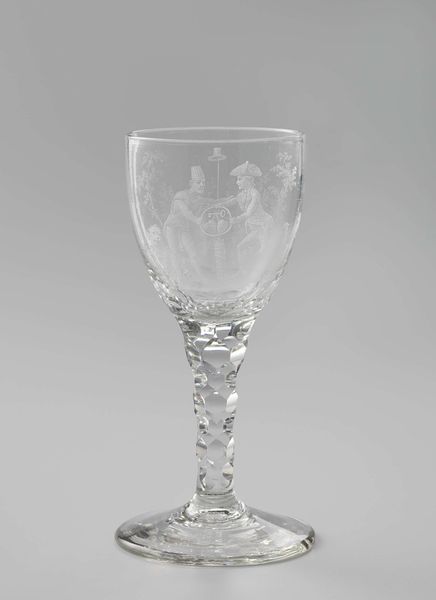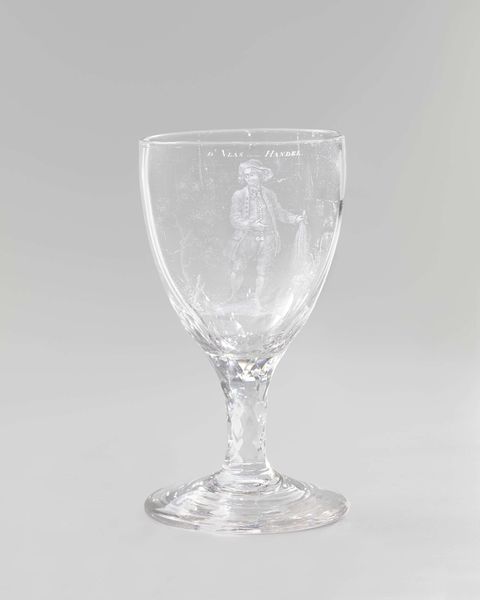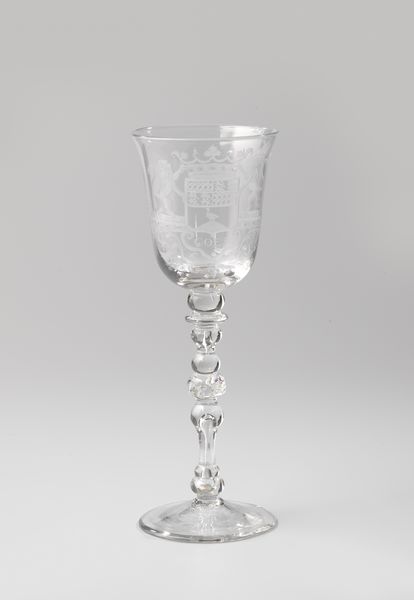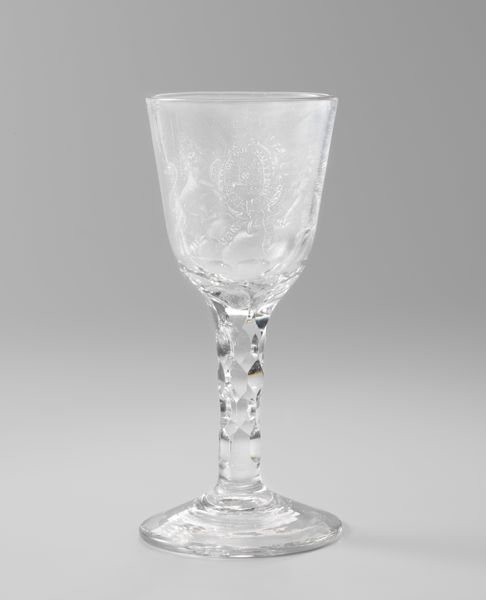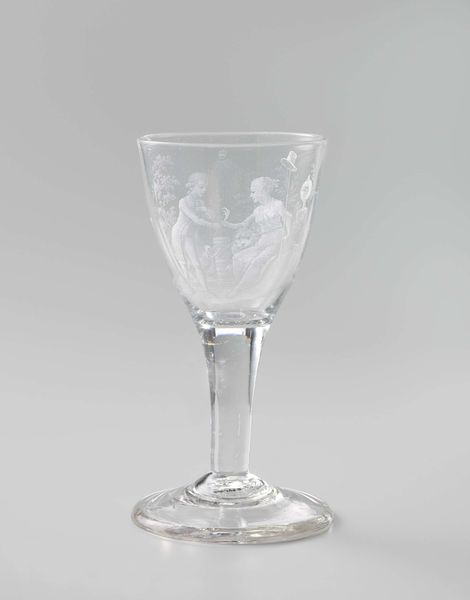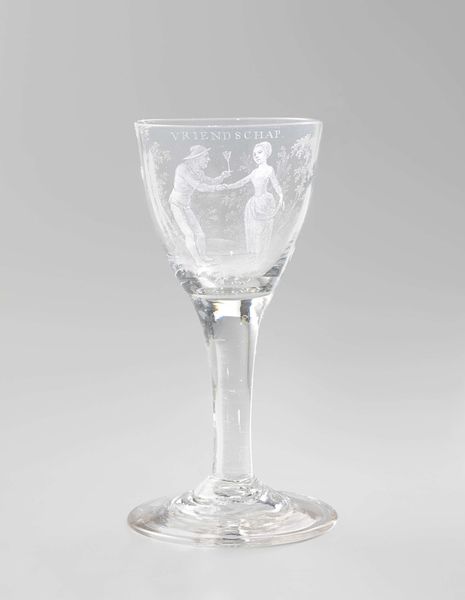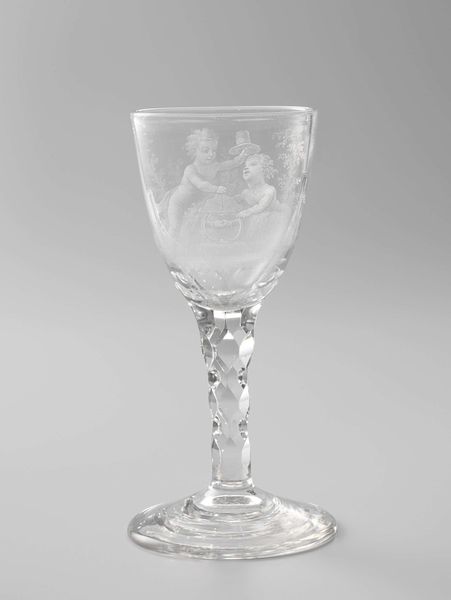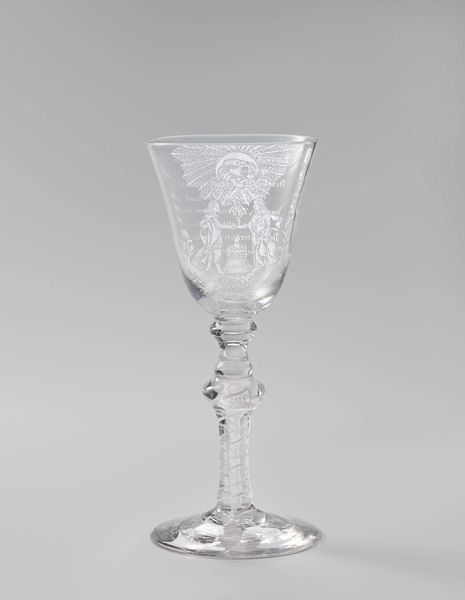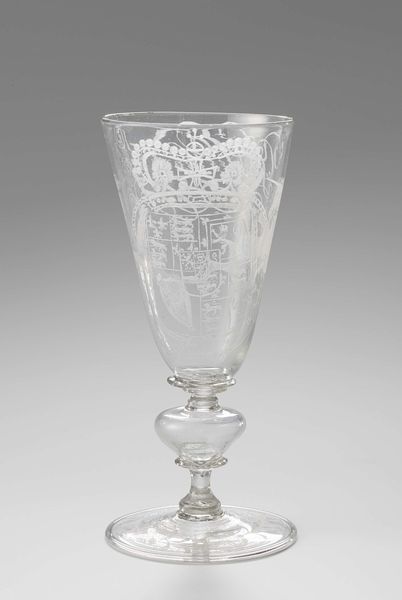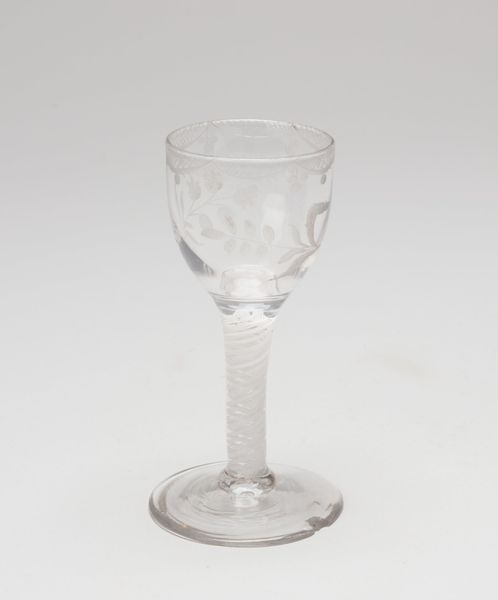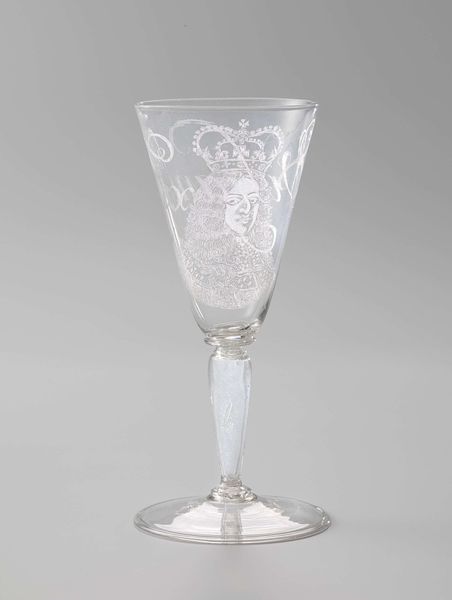
print, glass, engraving
#
dutch-golden-age
# print
#
glass
#
engraving
Dimensions: height 20.3 cm, diameter 8.5 cm
Copyright: Rijks Museum: Open Domain
Curator: Here we have a 'Kelkglas met de driemaster Propatria,' or a goblet featuring the three-masted ship 'Propatria.' It was created anonymously sometime between 1779 and 1794. Editor: The first thing that strikes me is the incredible detail. The delicate engraving on the glass—the ship itself, the lettering—it’s astounding that someone could achieve that level of precision on such a fragile medium. Curator: It's worth remembering the historical context; such engraved glassware played a role during a period of significant political and economic change in the Dutch Republic. Items like these reflected the nation's maritime power and mercantile spirit. Editor: Exactly. The act of engraving itself suggests the importance of craft, elevating what might be a mundane object. What kind of labour and specialized tools were needed to produce it? The material value intertwines with its purpose: to be held, to be used. A tool of display and status as well as something functional. Curator: Absolutely. Display was crucial. Engraved glassware often became symbols of status and loyalty during politically charged periods, like the Patriot movement in the late 18th century. To toast with such a glass could be a political act in itself. Editor: That intersection is fascinating. Drinking vessels often participate in performative elements, with very physical actions tied to intellectual concepts of nation, trade, even war. Imagine the conversations and clinking sounds surrounding such a glass! Curator: Moreover, the ‘Propatria’—'For the Fatherland'—naming speaks to a rising sense of national pride and unity amidst internal and external challenges the Dutch Republic was facing then. The object broadcasts Dutch power and aspirations to those that view or utilize the glass. Editor: So this is a functional piece imbued with strong political messaging. It shows us that artistry and skilled craft exist in tandem with social meaning and utility, turning glass into a kind of propaganda. A drinking glass as an everyday, but still artful, carrier of ideologies. Curator: Reflecting on this goblet now, it shows us how ordinary items can give insights into complex political and cultural history, connecting artistic expression, daily life, and broader historical narratives. Editor: For me, examining this goblet forces considerations around value, both monetarily, through the skills of the engraver, but also conceptually—a convergence of material object, artistic statement, and social record.
Comments
No comments
Be the first to comment and join the conversation on the ultimate creative platform.

